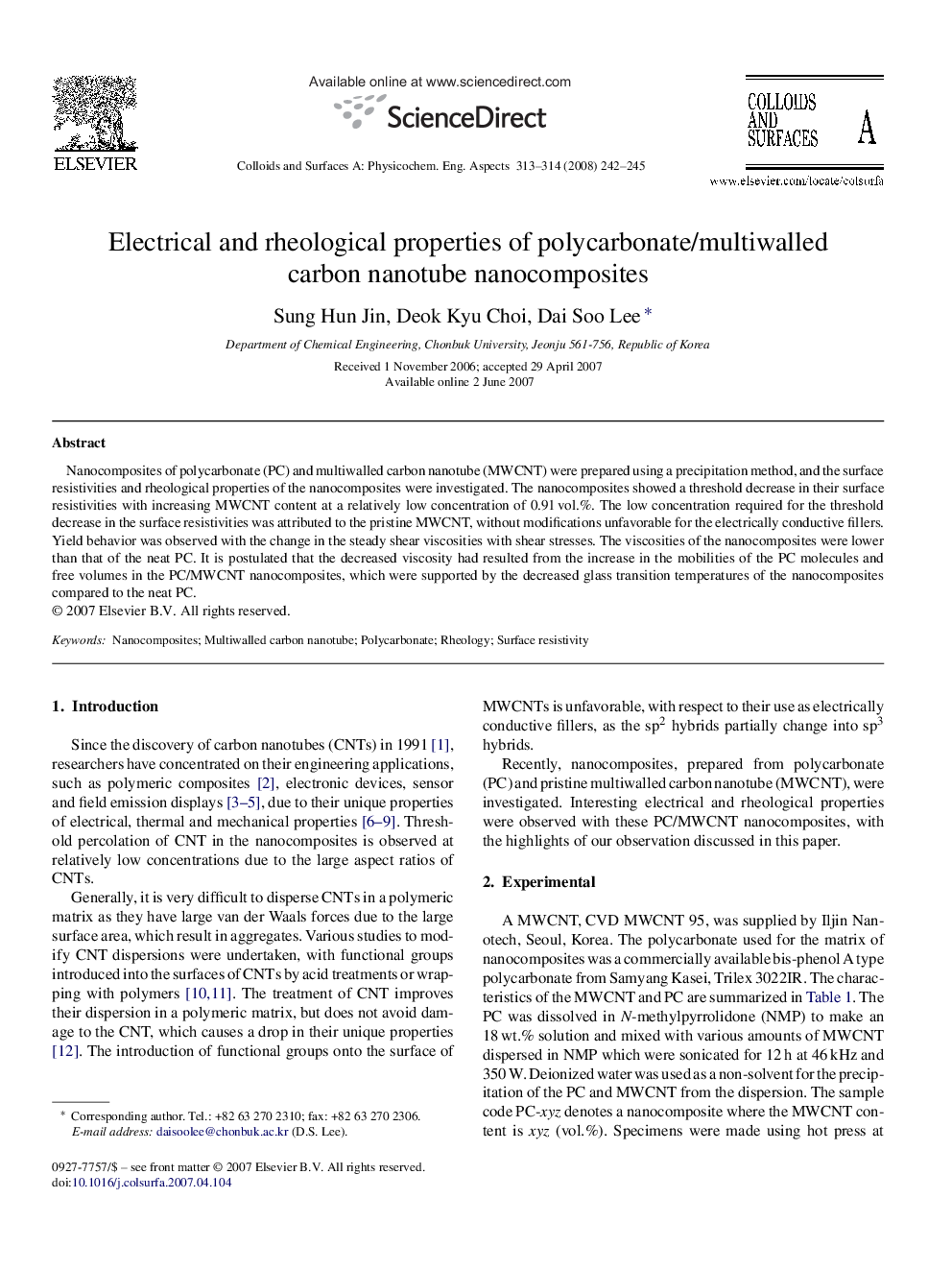| Article ID | Journal | Published Year | Pages | File Type |
|---|---|---|---|---|
| 596971 | Colloids and Surfaces A: Physicochemical and Engineering Aspects | 2008 | 4 Pages |
Nanocomposites of polycarbonate (PC) and multiwalled carbon nanotube (MWCNT) were prepared using a precipitation method, and the surface resistivities and rheological properties of the nanocomposites were investigated. The nanocomposites showed a threshold decrease in their surface resistivities with increasing MWCNT content at a relatively low concentration of 0.91 vol.%. The low concentration required for the threshold decrease in the surface resistivities was attributed to the pristine MWCNT, without modifications unfavorable for the electrically conductive fillers. Yield behavior was observed with the change in the steady shear viscosities with shear stresses. The viscosities of the nanocomposites were lower than that of the neat PC. It is postulated that the decreased viscosity had resulted from the increase in the mobilities of the PC molecules and free volumes in the PC/MWCNT nanocomposites, which were supported by the decreased glass transition temperatures of the nanocomposites compared to the neat PC.
